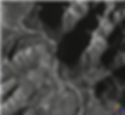Panchromatic Imagery: High-Resolution Mapping Explained
- Anvita Shrivastava
- Sep 24, 2025
- 3 min read
In the fast-changing world of remote sensing and geospatial analysis, panchromatic imagery has become an essential component of high-resolution mapping. Whether you are interested in urban planning or environmental monitoring, understanding the role and ability of panchromatic imagery may improve your remote sensing and geospatial projects.

What is Panchromatic Imagery?
Panchromatic imagery refers to black-and-white images captured over a large range of light, usually in the visible range from blue to red. Unlike multispectral images, which capture data in discrete color bands, panchromatic images combine all visible light into one high-resolution image.
The result? Since panchromatic imagery has quite good spatial resolution - often greater than multispectral imagery - it is often the best choice for detailed mapping applications.
How Panchromatic Imagery Works
Panchromatic sensors on satellites or aerial systems measure light intensity throughout the entire visible spectrum. Without breaking the light into separate bands, these sensors can concentrate all incoming light on a single detector. This leads to:
Sharper images - High spatial resolution can show objects as small as a few meters or less.
Greater clarity - Fine details such as road networks, outlines of buildings, and features of the terrain become more distinct.
Better data for analysis - Useful for object detection, land cover classification, and change detection.
High-Resolution Panchromatic Imagery Uses
Urban Planning and Infrastructure Development
Planners can use high-resolution imagery for accurate mapping of roads, buildings, and utility networks. This data can be potentially applied by urban planners for zoning, urban expansion, and smart cities projects.
Environmental Monitoring
Panchromatic imagery can sense small changes in forests, wetlands, and agricultural areas. Changes in patterns of vegetation, erosion, and clearing, and the health of vegetation can be detected using these data.
Disaster Management
Rapid mapping from post-disaster images is important to allow authorities to monitor damage, plan rescue operations, and provide high-quality coordination of relief.
Military and Defense Applications
High-resolution, detailed reconnaissance and surveillance can be enhanced with the clarity and high definition of panchromatic imagery.
Panchromatic vs Multispectral: Why Resolution Matters
Multispectral imagery offers analysis based on color, but is most often at lower spatial resolution. Panchromatic imagery helps enhance the ability to analyze multispectral imagery by pan-sharpening the high spatial resolution panchromatic image with the lower spatial resolution multispectral bands to create a color image with high spatial resolution.
This offer in analysis has great utility in GIS, remote sensing, and precision agriculture as laws on how to better interpret the satellite data.
Future trends in panchromatic imaging
With emerging satellite technology, panchromatic sensors are reaching sub-meter performance that can resemble photographic quality in orbit. In combination with AI imaging processing, the future is delivering:
Automated feature extraction
Real-time mapping and monitoring
Integration with drone and UAV imagery for hyper-local mapping
Panchromatic imaging is still a necessary data source for close-range or high-resolution mapping, and no other remote sensing method can currently match its resolution and clarity. With panchromatic imagery, organizations can utilize this data to make effective decisions, improve operations, and remain competitive in a world driven by big data.
Understanding panchromatic imagery data and applying that understanding is essential for geospatial analysis in urban development, environmental monitoring, or in the case of disaster response.
For more information or any questions regarding the Panchromatic, please don't hesitate to contact us at
Email: info@geowgs84.com
USA (HQ): (720) 702–4849
India: 98260-76466 - Pradeep Shrivastava
Canada: (519) 590 9999
Mexico: 55 5941 3755
UK & Spain: +44 12358 56710
